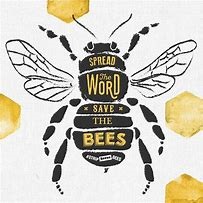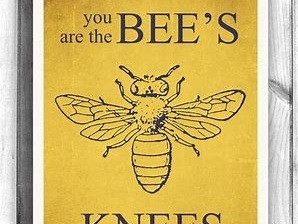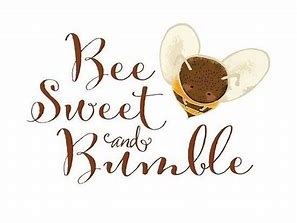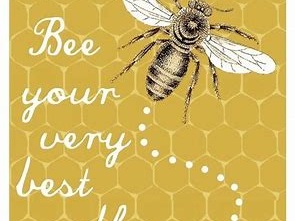When did you last give a bee a thought?
Well beecome more aware and stick a note in your diary for the 10th July! Everyone can make a difference to ensure that bees stay around for a long time to come!
Don’t Step on A Bee Day is an important reminder that the fate of the common bee lies in the balance – with bee numbers in some countries having halved in the last decade with no apparent cause, it’s vital that we take care to maintain bee populations, pollination and honey production.
Attitudes to bees must change and a new generation needs to be educated about the value of bees and the threats to their existence.
Bees are pollinators vital to our food chain. Without the tireless work of our little buzzing friends, over a third of everything we eat would disappear from our tables. Bees, like other insects, are part of a food chain.
The harvest from honey bees of honey, pollen, wax and propolis has nutritional, craft, manufacturing, and medical applications.
In the UK about 70 crops are dependent on, or benefit from, visits from bees. In addition, bees pollinate the flowers of many plants which become part of feed for farm animals.
The economic value of honey bees and bumblebees as pollinators of commercially grown insect-pollinated crops in the UK has been estimated at over £200 million per year. But bees are in danger of disappearing from our environment which is due to farming practices which continue to disturb natural habitats and forage of solitary and bumblebees at a rate which gives them little chance for re-establishment.
Also, the honey bee is under attack from the varroa mite and it is only the treatment and care provided by beekeepers that is keeping colonies alive. Most wild honey bee colonies have died out because of this disease.
Did you know that most of our honey here in the UK is imported? But with the wealth of beekeepers on our doorstep across the country there is really no need.
So, support these genius little insects and ensure that they will bee around for many more years!
Interesting facts about bees that will leave you buzzing….
There are 16,000 species. Most are solitary insects; only about 5 percent are social bees, the most common being the honeybee. As many as 80,000 of them colonize a single hive.
Research has shown that Asian bees and European bees can understand each other.
The tools that have evolved on the limbs and mouthparts of bees are neat examples of adaptation and engineering.
Bees can recognise human faces.
The buzz that you hear when a bee approaches is the sound of its four wings moving at 11,400 strokes per minute. Bees fly an average of 15 miles per hour.
The average worker bee makes only one-twelfth of a teaspoon of honey in its lifetime.
Worker honey bees are female, live for about six weeks and do all the work.
The male bees are drones and their only task is to find a queen bee to mate with. The male honeybees—live only for mating with the queen. If there is a shortage of food in the hive, the workers kick their lazy, gigolo asses out.
To die for: When drones mate, they die afterwards from a ruptured abdomen. Sex detaches their endophallus, which gets stuck inside the queen.
She continues to mate—the drones aren’t terribly smart, apparently—until she collects more than 70 million sperm from multiple males.
A newly hatched queen immediately kills all other hatched and unhatched queens in the hive.
Worker bees have strictly regimented roles, including that of undertakers who drag their dead siblings from the hive.
Africanized honey bees, also known as killer bees, were originally produced in 1956 by cross-breeding African bees with European bees. Since being introduced into Brazil they have killed more than 1,000 people.
In 1944 Salvador Dali painted a work entitled Dream Caused by The Flight of a Bee Around A Pomegranate A Second Before Awakening.
Until the late 17th/early 18th century, queen bees were thought to be kings.
The patron saint of bees and beekeepers is St Bernard of Clairvaux.
The term “honeymoon” is derived from an old northern European custom in which newlyweds would consume a daily cup of mead, made with fermented honey, for a month.
During World War I, honey was used to treat the wounds of soldiers because it attracts and absorbs moisture, making it a valuable healing agent.
Honey never spoils. Ever.
Bumblebees can estimate time intervals. Researchers have found that the insects extend their tongues in tandem with the rhythm of a sweet reward. This aids in the hunt for nectar, whose availability waxes and wanes.
According to an old wives’ tale, a bee entering your house means a visitor is on his way, and if you kill the bee, the visitor won’t be a pleasant one.
Suffice to say, invite that unexpected honeybee guest to sit down to tea and maybe have a flower or two!
#DontStepOnABeeDay to help raise awareness!




